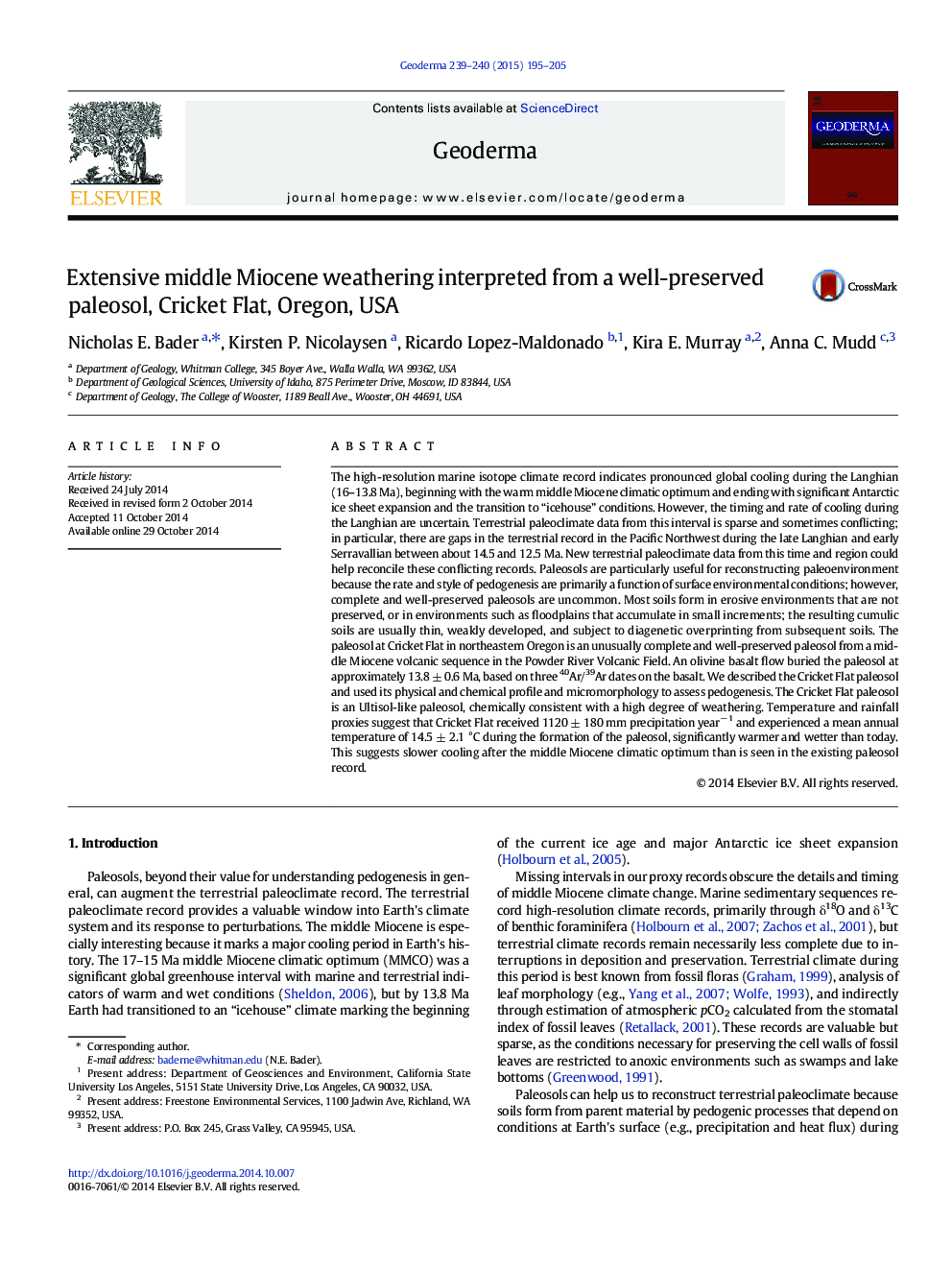| کد مقاله | کد نشریه | سال انتشار | مقاله انگلیسی | نسخه تمام متن |
|---|---|---|---|---|
| 6408663 | 1629466 | 2015 | 11 صفحه PDF | دانلود رایگان |
• We describe a well-preserved paleosol from the middle Miocene of northeastern Oregon.
• This Ultisol-like paleosol is highly chemically weathered, and many mobile elements have been leached.
• Climate proxies suggest that the paleosol was formed in a wet and warm environment at about 13.8 Ma.
• This is the only Ultisol-like paleosol of Neogene age described from eastern Oregon.
The high-resolution marine isotope climate record indicates pronounced global cooling during the Langhian (16–13.8 Ma), beginning with the warm middle Miocene climatic optimum and ending with significant Antarctic ice sheet expansion and the transition to “icehouse” conditions. However, the timing and rate of cooling during the Langhian are uncertain. Terrestrial paleoclimate data from this interval is sparse and sometimes conflicting; in particular, there are gaps in the terrestrial record in the Pacific Northwest during the late Langhian and early Serravallian between about 14.5 and 12.5 Ma. New terrestrial paleoclimate data from this time and region could help reconcile these conflicting records. Paleosols are particularly useful for reconstructing paleoenvironment because the rate and style of pedogenesis are primarily a function of surface environmental conditions; however, complete and well-preserved paleosols are uncommon. Most soils form in erosive environments that are not preserved, or in environments such as floodplains that accumulate in small increments; the resulting cumulic soils are usually thin, weakly developed, and subject to diagenetic overprinting from subsequent soils. The paleosol at Cricket Flat in northeastern Oregon is an unusually complete and well-preserved paleosol from a middle Miocene volcanic sequence in the Powder River Volcanic Field. An olivine basalt flow buried the paleosol at approximately 13.8 ± 0.6 Ma, based on three 40Ar/39Ar dates on the basalt. We described the Cricket Flat paleosol and used its physical and chemical profile and micromorphology to assess pedogenesis. The Cricket Flat paleosol is an Ultisol-like paleosol, chemically consistent with a high degree of weathering. Temperature and rainfall proxies suggest that Cricket Flat received 1120 ± 180 mm precipitation year− 1 and experienced a mean annual temperature of 14.5 ± 2.1 °C during the formation of the paleosol, significantly warmer and wetter than today. This suggests slower cooling after the middle Miocene climatic optimum than is seen in the existing paleosol record.
Journal: Geoderma - Volumes 239–240, February 2015, Pages 195–205
